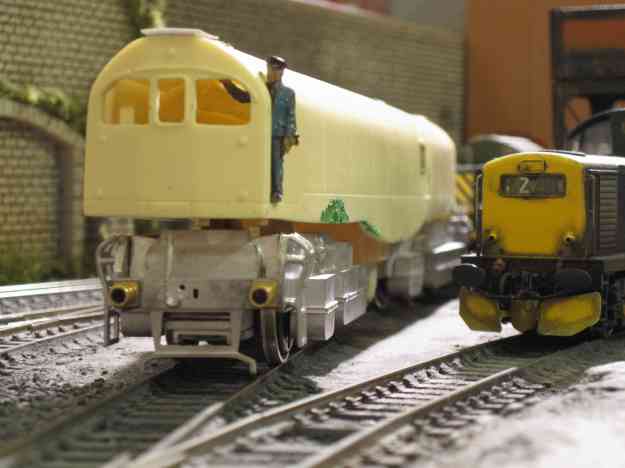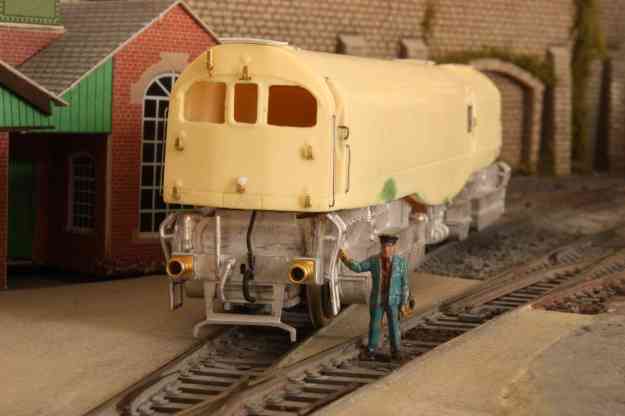 I tried to think of a good Leader pun, but ‘falling behind’ works as an inverse analogy.
I tried to think of a good Leader pun, but ‘falling behind’ works as an inverse analogy.
36001
The picture above shows one of my favourite locomotives: 36001, Bulleid’s Leader; the monstrous experimental steam engine that looked like a diesel. Leader was constructed in 1948 and ran for a brief 1½ year period (from 1949 to 1950). ‘Ran’, of course, might not be the best word for Leader’s trial runs, as she was prone to failure and was often towed back to Brighton Works.
Leader was fitted with various experimental design features including: a chain drive; a fully enclosed boiler; and a cab at either end. She was also fitted with an off-centre boiler (very strange). The fire box was located near the centre of the loco and must have been a terrible environment for a fireman.
I always found something fascinating about this loco and urged my parents to buy me a book on the subject. When I left home, this book was one of the first things that I ‘acquired’ from my parents house.
The Model
There is a resin kit available of Leader, made by Golden Arrow Productions, which I got for my Birthday in 2008. After purchasing a load of Bulleid Q1 wheels (expensive), I set to work planning out the look of the model. The Golden Arrow Productions mould is good, but I thought it a shame that it missed out some of the more prominent panel lines, so I stencilled the panel lines out onto the moulding and scored these onto the resin with a modelling knife.
I was also not to keen on the shape of the windows, which I felt didn’t quite capture the look of the prototype. Following the guidance of a topic on converting the Golden Arrow Leader on RMweb, I decided to widen the windows and slightly change their shape.


The white metal chassis blocks are lovely mouldings for this model, and when built they really give you an idea of how big this engine really was (an idea of scale kindly provided by driver Bob in the pictures above and below). It might not be the best engine to build if you have a layout with low tunnel mouths, as it really is a beast. The real thing towered over most water tanks, making it difficult to top it up with water.

Liveries
Livery-wise there are a surprising number of options for an engine that ran for such a short period of time. Leader carried prime grey with a large British Railways ‘cycling lion’ emblem (only on one side) for a very short period. The British Railways emblem was quickly removed and the engine was lined out (along its panels), but remained in grey.
I have never cared much for either livery and I instead opted for the livery (well… not really a livery) present in the only colour picture that exists of Leader. At this stage it was being repainted and appears to be a very silvery grey. This was the first image of Leader that caught my eye, many years ago and this was what I wanted on my model.
More about the build next time….
visit grasslandsmodels.wordpress.com for further projects
-
 9
9


.thumb.jpg.2fffa28944b81026f58fa37077aebce8.jpg)

10 Comments
Recommended Comments
Create an account or sign in to comment
You need to be a member in order to leave a comment
Create an account
Sign up for a new account in our community. It's easy!
Register a new accountSign in
Already have an account? Sign in here.
Sign In Now